The passing of one of CIMMYT’s Distinguished Scientists
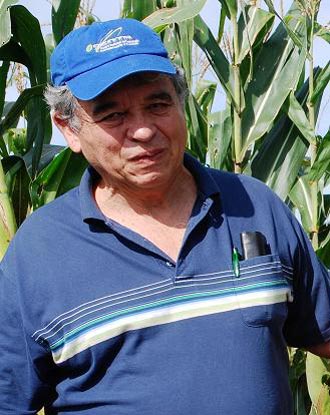 The CIMMYT community and friends across the globe mourn the loss of great maize breeder Hugo Salvador Córdova Orellana who died on 25 December 2009. Hugo spent 32 years with the center striving, and often times succeeding, to increase global food security.
The CIMMYT community and friends across the globe mourn the loss of great maize breeder Hugo Salvador Córdova Orellana who died on 25 December 2009. Hugo spent 32 years with the center striving, and often times succeeding, to increase global food security.
In Hugo’s three decades with CIMMYT he drastically changed the world of maize in Central America. He contributed to the development and spread of improved maize varieties across millions of hectares; promoted and popularized quality protein maize (QPM); co-authored hundreds of papers; and was an inspiration to his students, staff, and the global agricultural community. In recognition of a great mind, persevering work ethic, and complete dedication to his calling, Hugo earned the title of CIMMYT Distinguished Scientist, a title held by only five other center members. Despite official retirement from CIMMYT in 2007, Hugo continued his work as a CIMMYT consultant until his death.
Hugo first arrived at CIMMYT in September of 1969 as a trainee in the Global Maize Program. He then spent several years with the National Agriculture School Santa Tecla in El Salvador, his native country, before returning to El Batán in 1975 as a maize post-doctorate. His work focused on maize breeding and agronomy for Central America and he played a major role in the development of the Regional Maize Program (PRM), a network of researchers from nine countries and CIMMYT that worked with support from the Swiss Agency for Development and Cooperation (SDC) to develop and spread improved maize varieties and crop management practices. An estimate in the mid-1990s credits Córdova and PRM members for adding USD $70 million annually to the value of Central American grain production.
In 1992 he joined the Tropical Lowland Maize Subprogram. An expert breeder with a tireless work ethic, Hugo helped develop over 70 inbred maize lines, which have been released in over 15 countries. It is estimated that at least 4 million hectares throughout the developing world are sown with maize varieties that at some point passed through Hugo’s hands.
Hugo became the coordinator of the Global Quality Protein Maize (QPM) Program in 1997. He helped develop several high-yielding QPM varieties and it is largely thanks to his efforts that 0.5 million hectares in Central American are sown with QPM, a type of enhanced maize that increases consumers’ protein intake and can help decrease malnutrition.
The passion Hugo had for his work was evident to all who knew him and was further highlighted by over 50 recognitions and awards. Many the awards were bestowed by Latin American governments who saw first-hand the benefits Hugo’s work had in their respective countries. Hugo leaves behind a wealth of knowledge: he co-authored hundreds of publications, mentored more than 60 graduate and undergraduate students, and coordinated or lectured in numerous training courses.
Condolences are offered to Hugo’s wife, América, and his children, Lucy and Hugo. Though Hugo is no longer with us, the seeds he planted, both in the ground and in our memories, will grow on.
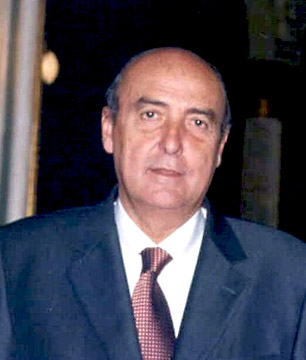 At its Annual Business Meeting in Washington, DC, on 07-08 December 2009, the
At its Annual Business Meeting in Washington, DC, on 07-08 December 2009, the 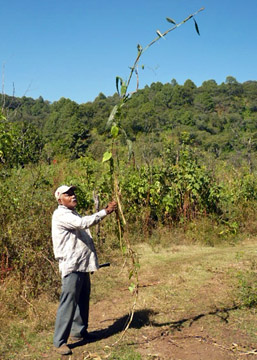 A CIMMYT team donned their expedition gear in November 2009 and set off to collect samples of teosinte, a wild relative of maize that is disappearing. The team obtained a special permit from the
A CIMMYT team donned their expedition gear in November 2009 and set off to collect samples of teosinte, a wild relative of maize that is disappearing. The team obtained a special permit from the 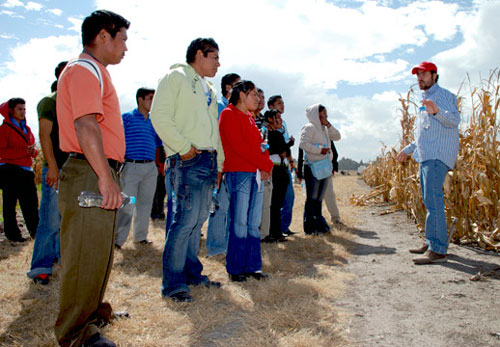 Nearly 20 Mexican students from the Instituto Tecnológico Superior de San Miguel el Grande in Oaxaca visited CIMMYT El Batán on 01 December 2009. Hosted by the Global Conservation Agriculture (CA) Program, the students spent half a day at the center learning about CA practices, CIMMYT, and Norman Borlaug. The day included a tour of the germplasm bank and experimental fields. “Several of the students were from marginalized communities, and with training, they have the capacity to be CA promoters and technicians in these vital areas,” said Andrea Chocobar, a member of CIMMYT CA team. Also assisting in the event were Víctor Chávez Tovar, Caritina Durán, Ricardo Romero, and Humberto González.
Nearly 20 Mexican students from the Instituto Tecnológico Superior de San Miguel el Grande in Oaxaca visited CIMMYT El Batán on 01 December 2009. Hosted by the Global Conservation Agriculture (CA) Program, the students spent half a day at the center learning about CA practices, CIMMYT, and Norman Borlaug. The day included a tour of the germplasm bank and experimental fields. “Several of the students were from marginalized communities, and with training, they have the capacity to be CA promoters and technicians in these vital areas,” said Andrea Chocobar, a member of CIMMYT CA team. Also assisting in the event were Víctor Chávez Tovar, Caritina Durán, Ricardo Romero, and Humberto González.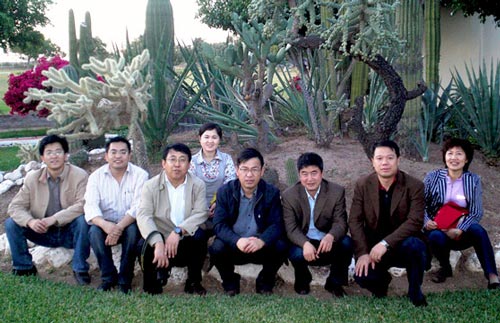 A delegation of eight scientists from the
A delegation of eight scientists from the 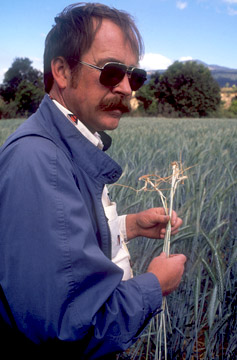 On 02 December 2009, a reception was held in New York City for a recently published book based on the life of the late
On 02 December 2009, a reception was held in New York City for a recently published book based on the life of the late 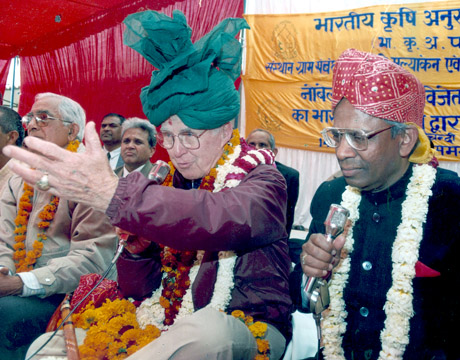 During 21-22 November, the
During 21-22 November, the 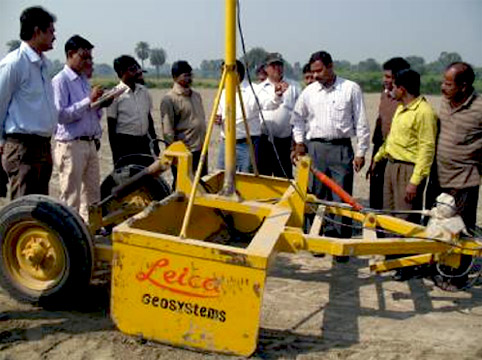 Nearly 20 delegates from North Bengal Agriculture University’s agricultural outreach stations and several local farmers attended a conservation agriculture (conservation agriculture) traveling training seminar in India during 29-30 October 2009.
Nearly 20 delegates from North Bengal Agriculture University’s agricultural outreach stations and several local farmers attended a conservation agriculture (conservation agriculture) traveling training seminar in India during 29-30 October 2009.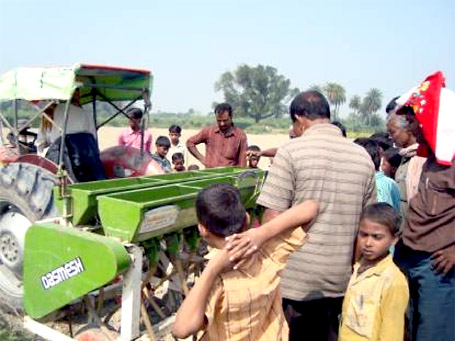 Participants then traveled to Rajendra Agriculture University’s (RAU), Pusa Farm, where they saw CA-based longterm experimental trials of rice-wheat and rice-maize systems. Following this, the delegation visited participatory trials of zero-till rice and listened to additional CA information and herbicide application techniques presented by CSISA hub manager Ravi Gopal. Finally, S. Chowdhury, CIMMYT seed production specialist, spoke about new wheat varieties suitable for the eastern Indo- Gangetic Plains.
Participants then traveled to Rajendra Agriculture University’s (RAU), Pusa Farm, where they saw CA-based longterm experimental trials of rice-wheat and rice-maize systems. Following this, the delegation visited participatory trials of zero-till rice and listened to additional CA information and herbicide application techniques presented by CSISA hub manager Ravi Gopal. Finally, S. Chowdhury, CIMMYT seed production specialist, spoke about new wheat varieties suitable for the eastern Indo- Gangetic Plains.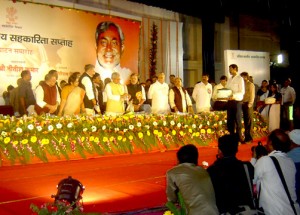 Tortillas made from quality protein maize (QPM) are now being sold on the streets in Patna, the capital city of Bihar, India. CIMMYT-India donated a QPM tortilla unit to Magadh Credit Cooperative Society (MCCS) and the society is now selling five tortillas with curry for about US$ 0.25 (10-12 rupees). The program is based on a “meals on wheels” scheme and the food will be sold at mobile shops and Sudha milk booths across Patna. The goal is to provide affordable, healthy food to the city’s urban poor. CIMMYT and Cereal System Initiative for South Asia (CSISA) are working to strengthen inbred production of hybrid QPM seed in eastern India to support this production chain.
Tortillas made from quality protein maize (QPM) are now being sold on the streets in Patna, the capital city of Bihar, India. CIMMYT-India donated a QPM tortilla unit to Magadh Credit Cooperative Society (MCCS) and the society is now selling five tortillas with curry for about US$ 0.25 (10-12 rupees). The program is based on a “meals on wheels” scheme and the food will be sold at mobile shops and Sudha milk booths across Patna. The goal is to provide affordable, healthy food to the city’s urban poor. CIMMYT and Cereal System Initiative for South Asia (CSISA) are working to strengthen inbred production of hybrid QPM seed in eastern India to support this production chain.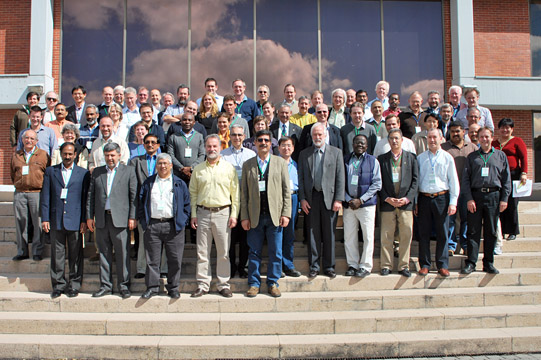 Nearly 60 world-renowned scientists and wheat experts gathered at El Batán during 10-13 November 2009 for the intensive workshop “Complementary strategies to raise wheat yield potential.” The event was divided into four main topics: imperatives for raising wheat yield potential; improving crop photosynthesis; optimizing adaption, yield, and lodging resistance; and combining complementary traits through breeding. The ultimate aim is to get new, high-yielding wheat varieties to farmers as quickly as possible.
Nearly 60 world-renowned scientists and wheat experts gathered at El Batán during 10-13 November 2009 for the intensive workshop “Complementary strategies to raise wheat yield potential.” The event was divided into four main topics: imperatives for raising wheat yield potential; improving crop photosynthesis; optimizing adaption, yield, and lodging resistance; and combining complementary traits through breeding. The ultimate aim is to get new, high-yielding wheat varieties to farmers as quickly as possible.